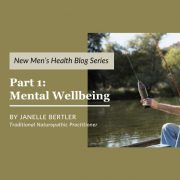Nurturing the Soul: A Journey to Healing Emotional Traumas
By Janelle Bertler, Traditional Naturopathic Practitioner
In our healing journeys, the ghost of emotional trauma often plays a significant role. The adage, “No one gets out of childhood without traumas,” resonates profoundly as a universal truth. Trauma, however, is not solely confined to the grand, dramatic events that come to mind. While abuse, betrayal, illness, loss, and abrupt life changes are often seen as the monumental “big T” traumas, the canvas of our lives is also painted with “little t” traumas. These seemingly smaller incidents hold the power to create emotional distress, triggering a spectrum of negative emotions that disrupt our equilibrium. Regardless of their magnitude, these traumas demand attention and processing for healing to seed deep within the body!
Here at Longevity, sometimes we see people stay so focused on their physical symptoms (usually subconsciously) as an avoidance to feeling emotional pain. It’s a defense mechanism that may provide temporary respite but ultimately hinders the deeper healing process. Emotional traumas, like storms, can leave lasting imprints on our hearts and minds, even translating into tangible physical manifestations. The pain trauma brings might seem insurmountable, but just as a wound heals with time, so too can emotional scars. Healing from emotional traumas is a deeply personal journey that requires patience, self-compassion, the right mindset and rolling with the emotional flow of this physical life. The following steps unveil a path toward healing from emotional traumas, propelling us towards a state of wholeness and peace.
Awareness
Awareness is the gateway toward healing. It’s the beginning of the path forward, out of the shadows of pain. Awareness creates the space needed for individuals to process their experiences, emotions, and memories. The process of validating the pain and the various emotions that accompany trauma is the foundation upon which recovery builds. Unprocessed emotions are wounds that remain hidden and fester below the surface, therefore, let the emotions flow. Give yourself permission to grieve, be angry, feel sad, etc., without attaching a narrative, judgment, or meaning. You may find it easiest to start with 15 minutes of manageable increments per day. Set a timer. When it goes off, promise your body you will show up again tomorrow! This process is a necessary part of integrating the trauma into one’s life story and finding meaning in the midst of pain. Awareness makes way for empowerment. It gives agency over the healing journey. You have control over your emotions, thoughts, and behaviors which allows for rebuilding a sense of self, regaining a sense of control, finding the strength to move forward and the resiliency to feel hope again.
Support Networks
Recognizing the need for help and seeking support is an integral part of the healing process. You don’t have to go through the healing journey alone. Reach out to friends, loved ones, support groups or therapists, who can offer guidance and understanding. Surround yourself with a support network who genuinely cares for your well-being and has your back. Not any one person can be all things, so diversify. Your support network can be immensely helpful during the healing process by providing validation, comfort, and a sense of belonging. Therapy can be useful in its ability to shine a light on your coping mechanisms, give you insights into your trauma, and provide you with tools to navigate healing. Therapists are excellent at providing understanding of how your formative years and specific traumas are still impacting your life. The beauty of support networks is that it can go both ways. When they need support, you can be there for them.
Practice Forgiveness
Forgiveness is not about condoning harmful actions or letting others off the hook; it’s about releasing the heavy burden of resentment from your own heart. Forgiving doesn’t mean forgetting; it means freeing yourself from the chains of bitterness. Holding onto grudges, anger and resentment only perpetuates the cycle of pain. Forgiveness can begin by tapping into empathy and allowing release. It is a process that’s unique to each individual and may take time. Remember to incorporate self-forgiveness in the process as well. Research on forgiveness shows improved mental health, less anxiety/depression, lower blood pressure, a stronger immune system, improved heart health, improved self-esteem and healthier relationships. All well worth the time invested.
Reflection
Reflective practice allows us to observe our own thoughts and feelings. Most times our thoughts and feelings go unobserved, creating repetitive negative patterns. Developing the ability to slow down, creates space for observation allowing for gaining understanding, identifying patterns and triggers, transforming actions, and finding forward momentum. Self-reflection can lead to profound insights and safeguard against inadvertently re-traumatizing yourself or others. As you pen down your traumatic experiences, I challenge you to rewrite your story from a place of empowerment – extract lessons, both positive and challenging, that the experience offered. How does your prior experience reverberate in your life now? Just remember to not get lost in the mind. Bring it into action. How do you want to adapt? How are you going to bounce back? How are you going to interact with those around you, creating a different pattern moving forward? What can you let go of? Consistent self-reflection nurtures accountability, fostering personal growth that ripples outward, benefiting not only you but those who share your journey. Through reflection, you build a bridge between past wounds and present healing, fostering resilience and empowerment.
Mindset
Cultivating a resilient mindset is akin to tending to the garden of your thoughts, carefully nurturing the beliefs that shape your reality. Marisa Peer explains, “a belief is just a thought that plays over and over,” so begin to choose your thoughts wisely. Mindset influences how you think, feel, and behave in every given situation. Therefore, by growing a resilient mindset we harness our inner strength, cushioning ourselves from the effects of daily stressors. The mindset that fosters resilience begins with the following traits: optimism, positive self-talk, purpose, adaptability, emotional intelligence, and an ability to work through problems. All these traits can be grown! Srikumar Roa talks about situations as neither good nor bad. He recommends holding the perspective of “who knows, we will see.” I challenge you to invite a sense of curiosity, looking for the silver lining, even if all you can see right now are dark clouds. Resilience won’t make your problems go away — but resilience can give you the ability to see past them, allowing for satisfaction, peace, and enjoyment in life with a better ability to manage stress and adversity. If we apply the mind’s healing power, we can heal not only our mental and emotional afflictions but physical problems too.
Authenticity
The journey towards authenticity dances hand in hand with self-discovery and self-compassion. Authenticity is particularly pivotal for trauma survivors, as it involves shedding the protective facades and embracing one’s true self. Authenticity requests vulnerability and as vulnerability flourishes it begins to dismantle self-defensive behaviors which were constructed in response to trauma. An authentic person is someone who exudes genuineness, honesty, and comfort in their own skin, unburdened by the need for external acceptance. It’s a key that unlocks one’s true potential and is associated with higher self-esteem, psychological well-being, and genuine happiness. Authenticity forms the foundation for relationships, enabling individuals to be appreciated for their true selves. The journey of inviting vulnerability and becoming more authentic to you, is a journey that empowers healing, self-connection, and the ability to communicate needs with clarity. This ultimately leads to a life where one can unabashedly be themselves, embraced and valued for all their unique thoughts, beliefs, emotional needs, and desires. Embrace the journey of owning the masterpiece that is you – every facet and hue.
Set Boundaries
Boundaries are like the guardians of our emotional and psychological well-being, and they play a pivotal role in the healing journey from trauma. When individuals establish clear and healthy boundaries, they create a safe space where they can protect themselves from potential triggers and emotional distress. This safety provides a foundation for healing, allowing survivors to regain a sense of control over their lives and their personal space. Boundaries act as a buffer against re-traumatization, preventing others from crossing lines that might evoke painful memories or emotions. Moreover, they enable trauma survivors to define their needs and communicate them effectively, fostering a sense of agency and empowerment. In essence, boundaries are the scaffolding upon which the process of healing can be built, helping individuals navigate the path towards recovery with greater resilience and self-assuredness.
Lifestyle Support
Lifestyle can either support or hinder the emotional healing process. Let’s highlight the categories to pay attention to in your daily life.
- Self-Care Practices: Exercise, Stretch, Yoga, Tai Chi, Meditation, Deep Breathing, and Tapping all assist in managing stress, reducing anxiety, and supports staying grounded.
- Nutrition: A nutrient-rich diet that nourishes the body supports the brain with the necessary fuel to function normally, stabilize mood and improve energy levels.
- Sleep: Quality sleep is vital for the processing of traumas and supports emotional regulation. Create a restful sleep environment.
- Physical Activity: Regular exercise has been proven to reduce anxiety, depression, and can assist in releasing pent up energy. It releases the feel-good hormone called endorphins, supporting elevated mood.
- Creativity & Expression: Art, writing, and music are excellent therapeutics supports that can assist in processing of emotions.
Conclusion
Healing from emotional traumas is a journey of reclaiming ourselves. It requires compassion, patience, and consistent effort. Its ultimate goal is to lighten the heart, leading to a state of wholeness and an internal sense of peace. Just as a garden requires time to bloom after a storm, so too does the soul in the process of healing. This transformation of pain into wisdom, scars into stories, and darkness into newfound serenity is a testament to human resilience. It’s important to acknowledge that healing is not a linear path; there will be setbacks and challenges along the way. Yet, each small step forward is a cause for celebration, honoring the strength within. With the right support system, self-care regimen, and a willingness to confront past pain, one can turn trauma into an opportunity for personal growth.
Homeopathic & Nutritional Supports
Longevity’s Nutrition Shop has a wide range of support for emotional healing.
- Solace Milleu Homeopathic
- Grief Relief Herbal
- Relief-Tone Homeopathic
- Relax-Tone Homeopathic
- Calm Five Homeopathic
- St. John’s Wort
- Happy Saffron
- Zen
- Everyday Stress Relief
- Bach flowers
- And a whole bunch more
Feel free to ask your practitioner which product will be supportive to you and your situation.
Further Resources
Healing What’s Hidden: Practical Steps to Overcoming Trauma by Evan & Jenny Owens
Breaking the Habit of Being Yourself by Joe Dispenza
It Didn’t Start with You by Mark Wolynn
I Am Enough by Marisa Peer
Tell Yourself a Better Lie by Marisa Peer
The Tapping Solution: A Revolutionary System for Stress Free Living by Nick Ortner
Making Sense of Men by Alison Armstrong
Understanding Women: Unlock the Mystery by Alison Armstrong
The Body Keeps the Score by Bessel van der Kolk, MD
Getting Past Your Past by Francine Sharpiro PhD





